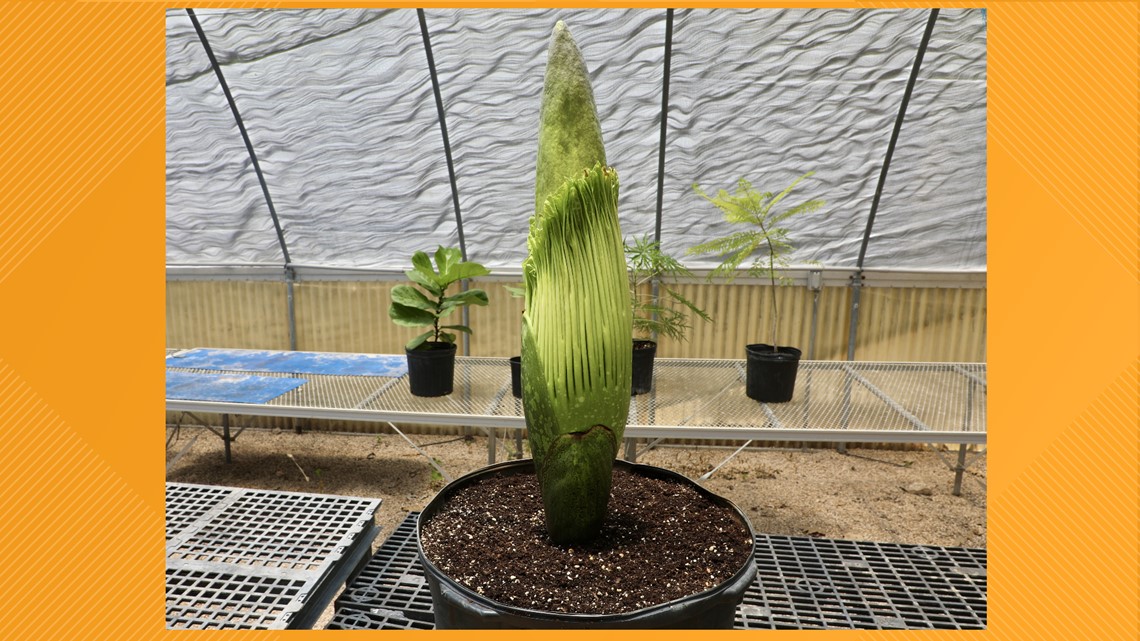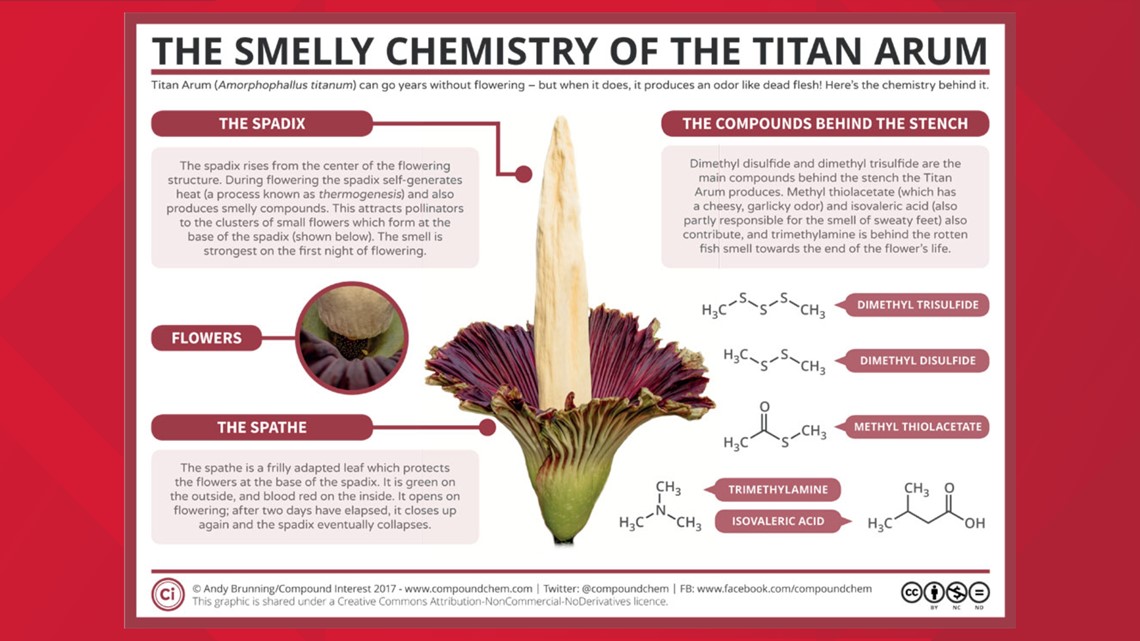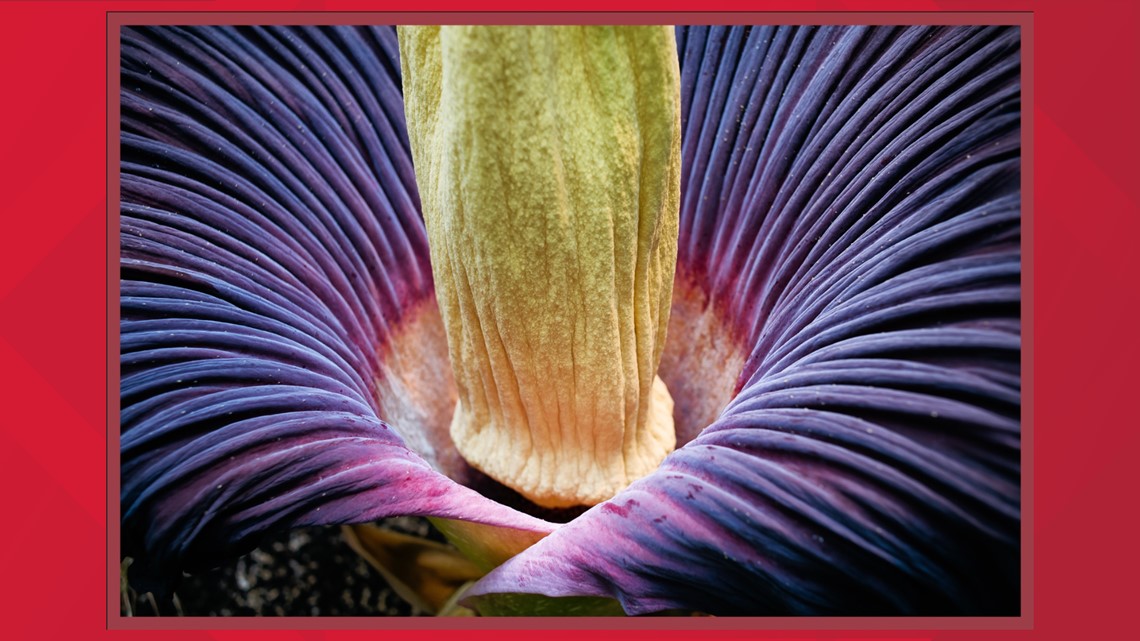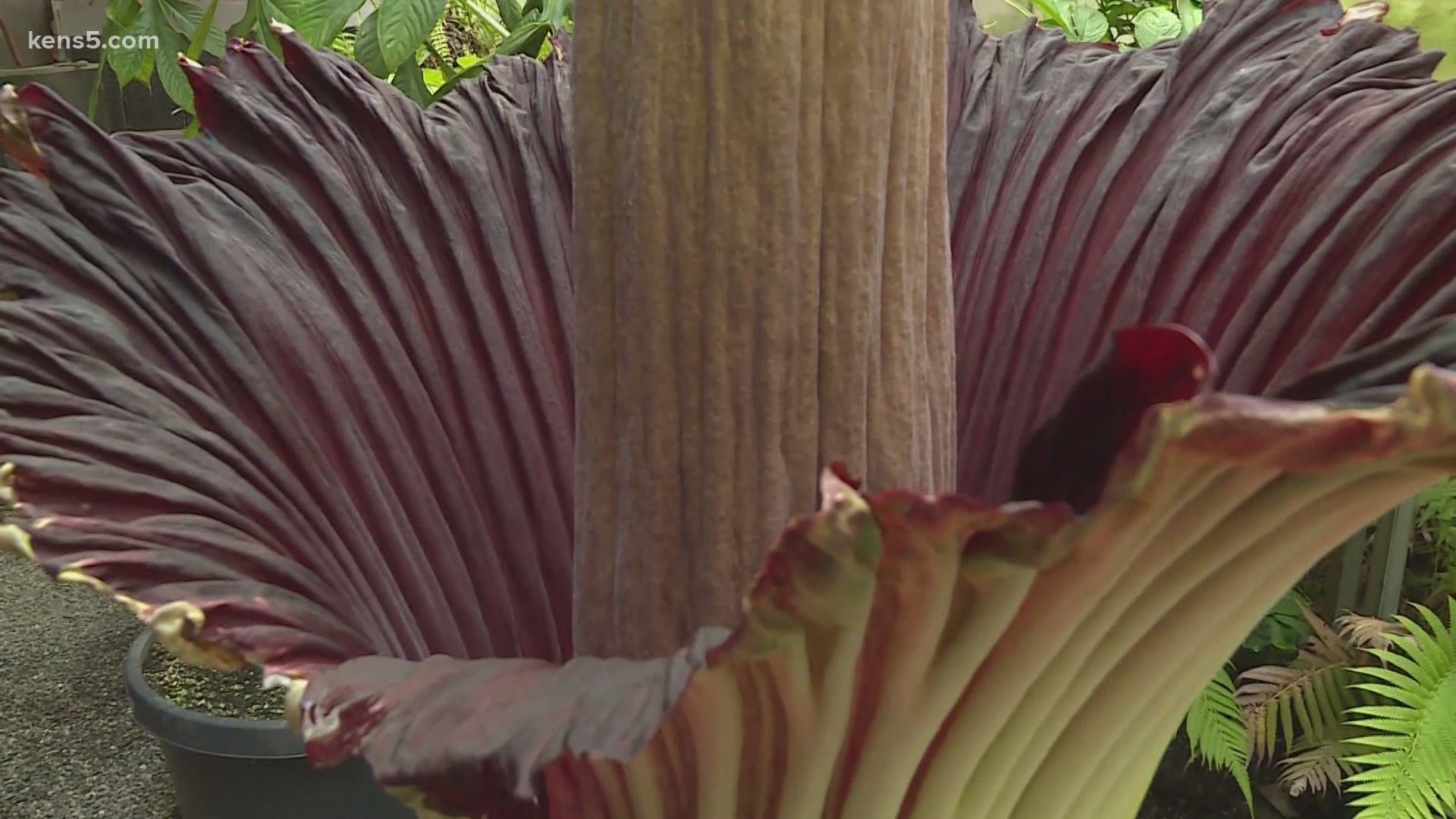SAN ANTONIO — The world's most unpleasant smelling flower is about to bloom at the San Antonio Zoo. The corpse flower, which is native to the rainforests of Sumatra in Indonesia, is an endangered plant that can take more than ten years to bloom for the first time.


It is most famously known for the powerful rotting flesh odor it releases, which is why it was named the corpse flower. This is the first known instance of a corpse flower blooming right here in San Antonio.
“Get your nostrils ready,” said Tim Morrow, President and CEO of San Antonio Zoo. “Our team estimates the plant could bloom in the next 10 days! This is a rather rare occurrence and a very exciting moment for our community and conservation. We invite everyone to act fast to see and smell this piece of history before the short bloom watch window is up!”
The related video above was originally published September 13, 2020.
The stinky flower was moved on Friday for public viewing near the ‘Back From The Brink’ Whooping Crane habitat. You are welcome to join the bloom watch of the plant now until its peak blossom window is up, which could be anytime in the next ten days. The malodorous flower will remain blossomed anywhere from one to four days.


Follow San Antonio Zoo’s social media pages for updates on size and bloom watch.
“These plants are very delicate and typically give us signs when they are ready to blossom,” said Dr. Dante Fenolio, VP of Conservation & Research at San Antonio Zoo. “Once we see those indicators, we have around 24 hours until its incredible and rare reveal!”
The corpse flower reaches heights of up to eight feet tall and will generate its own heat, which allows the stench to travel even further. The powerful scent, reminiscent of a decaying corpse, is produced by more than 30 chemicals and attracts carrion beetles and flesh flies who pollinate the flower.


San Antonio Zoo plans to collect pollen and tissue samples from the bloom for genetic study, and compare it to others in its rapidly dwindling population.
Fewer than 1,000 corpse flowers are estimated to remain in the wild, with a sharp decline in the last century.
The corpse flower was a gift from The Huntington in California.

